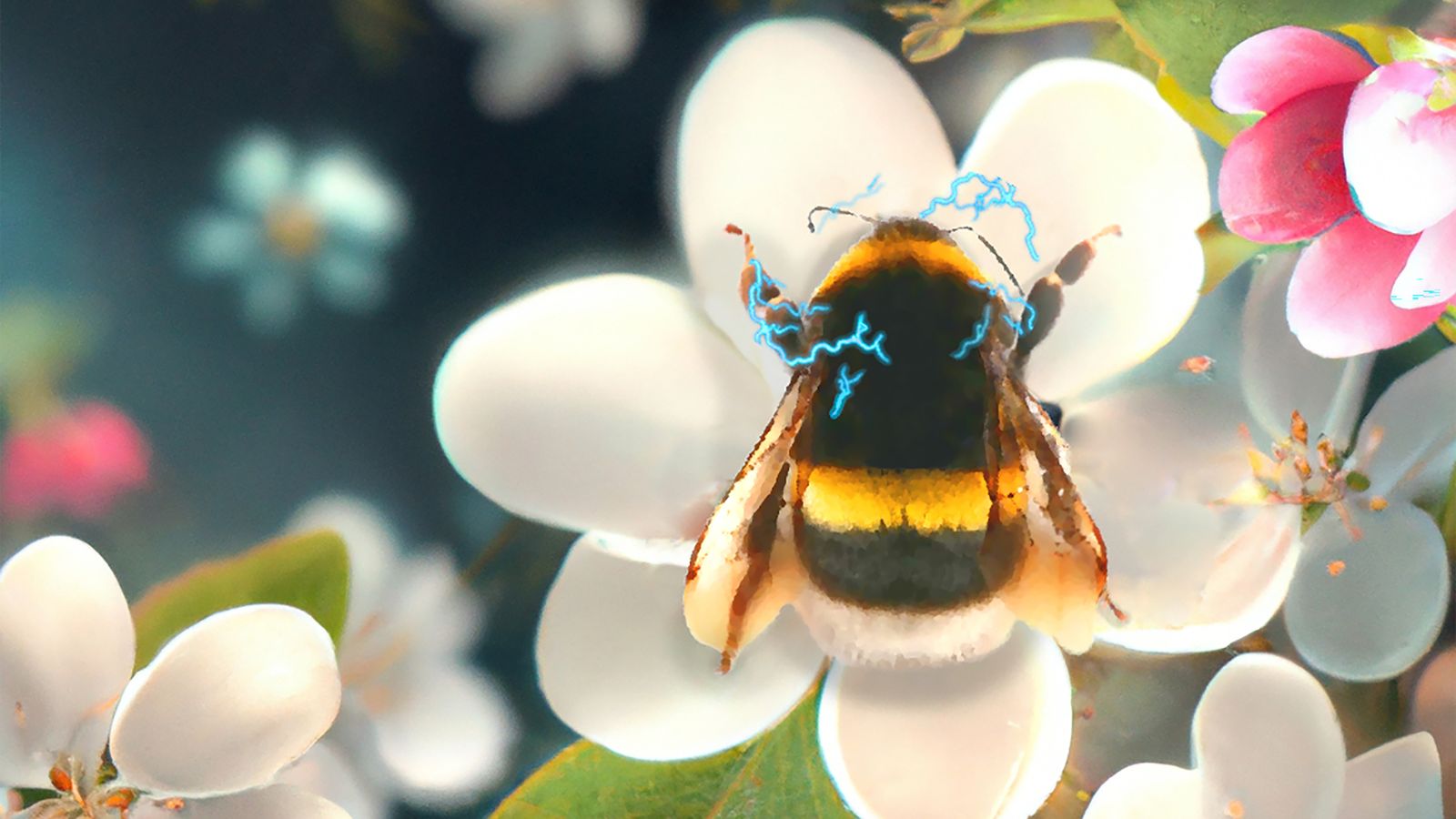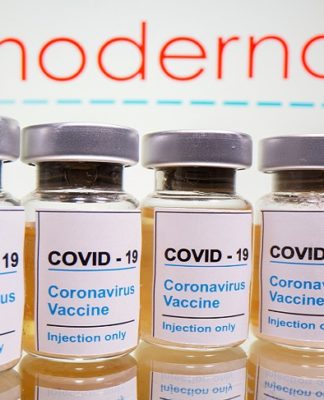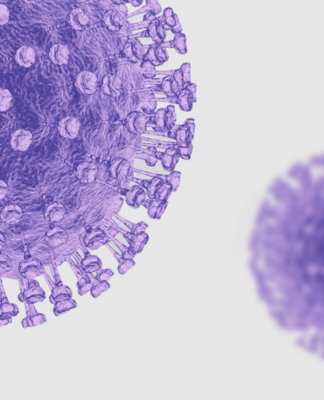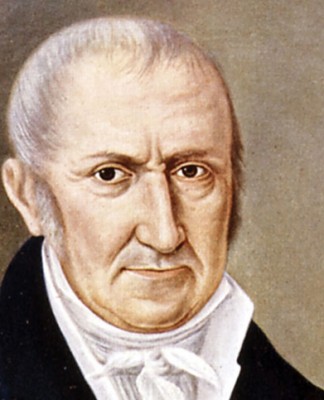Fertilisers confuse bumblebees, making them less likely to land on flowers, study suggests
Exhaust fumes, nanoplastics and viral particles that travel through the air could potentially create the same effect, according to the researchers.
By Amarachi Orie, news reporter
Wednesday 9 November 2022 06:41, UK
EMBARGOED TOO 0501 WEDNESDAY NOVEMBER 9 Undated handout artist's impression issued by University of Bristol of a bumblebee interacting with flower, as bumblebees are less likely to land on flowers sprayed with fertilisers because of certain changes associated with the chemicals, experts have said. Scientists from the University of Bristol have found that treating flowers with commonly used synthetic fertilisers causes the electrical field around the flowers to change making it harder for the bee
Image:
Pic: University of Bristol/PA
Why you can trust Sky News
Bumblebees are less likely to pollinate flowers that have been sprayed with fertilisers or pesticides due to changes in the electrical field around the plants, a new study suggests.
Flowers use a diverse range of cues to attract pollinators, including colour, sun, magnetic fields, odour, shape, texture, humidity and – recently discovered – static electrical fields.
Bumblebees, which have a positive electrical charge, can detect and are attracted to the negative electrical charge in flowers.
However, synthetic chemical sprays alter these floral electrical cues, disturbing the bees’ senses, according to the study published in PNAS Nexus.
While tests found that fertilisers did not change bees’ ability to identify a flower through vision and smell, researchers found that when they electrically manipulated flowers to mimic the electrical changes caused by fertilisers and pesticides in the field, the bees’ senses were affected.
They found that chemical sprays altered the electric field around the flowers for up to 25 minutes after application – substantially longer than natural fluctuations, such as those caused by wind.
They observed that this alteration aligned with a 20-minute change in bee feeding habits, in which bees were less likely to land on an electrically manipulated flower compared to a control flower that was not manipulated.
MORE ON ENVIRONMENT
University course
University offers course to help students deal with ‘eco-anxiety’
A COP27 sign on the road leading to the conference area in Egypt's Red Sea resort of Sharm el-Sheikh
Rishi Sunak defends COP27 snub saying he will be ‘focusing on depressing domestic challenges’ instead
File photo dated 04/02/22 of a fly-tipping site near Erith in Kent. The Government is fighting a losing battle against the crime gangs behind fly tipping, a new report suggests.
Fly-tippers regard fines as ‘business expenses’ as government approach to waste crime criticised by MPs
Related Topics:
Environment
The study provides the “first known” example of noise made by human activity “interfering” with the electrical sense of dry land animals, said study co-author Sam England, a Biological Sciences PhD student at the University of Bristol.
”It’s much like motorboat noise that hinders the ability of fish to detect their predators, or artificial light at night that confuses moths; the fertilisers are a source of noise to bees trying to detect floral electrical cues,” the co-author added.
Click to subscribe to the Sky News Daily wherever you get your podcasts
“This widens our understanding of the multifaceted ways in which human activity is negatively impacting the natural world, which can seem quite depressing, but what it will hopefully allow is to introduce or invent solutions to prevent the adverse effects that these chemicals may be having on bees.”
Read more:
Massachusetts woman accused of unleashing swarm of bees on officers carrying out eviction order
Best animal and nature images of 2022 revealed as Wildlife Photographer Of The Year announced
The researchers then mimicked a rain event to see if that would reduce the effect the chemical sprays had on the flowers. However, they again observed a prolonged alteration in the flowers’ electrical field from the chemical sprays.
‘Implications beyond pollination’
Therefore, the long-term effects of the changes remain uncertain.
“It is conceivable that the adverse effects of spray applications can persist in time,” the researchers said.
Exhaust fumes, nanoplastics and viral particles that travel through the air could potentially create the same effect, the study concluded, noting that the modifications caused by human-made chemicals carry “implications beyond pollination.”






























